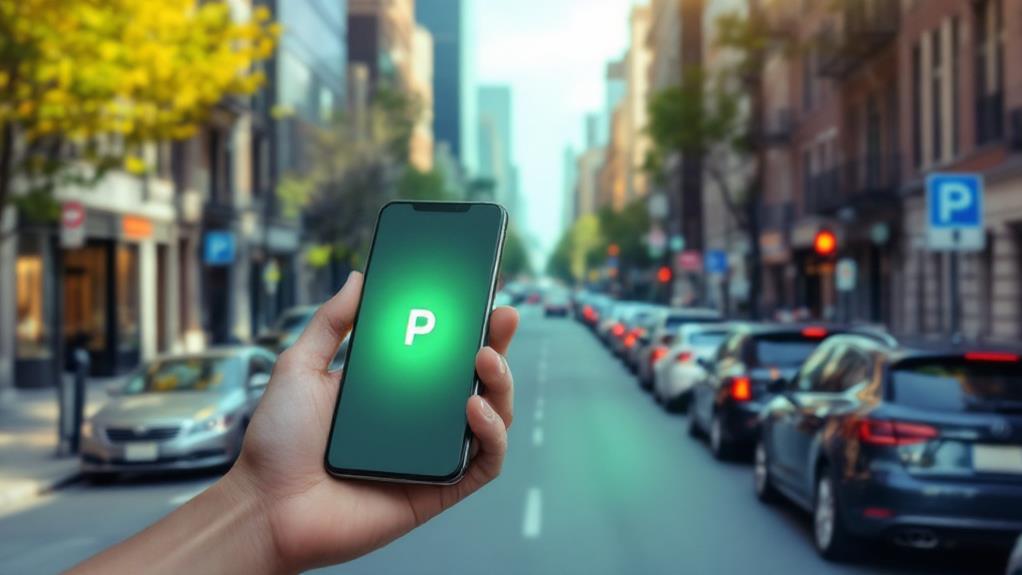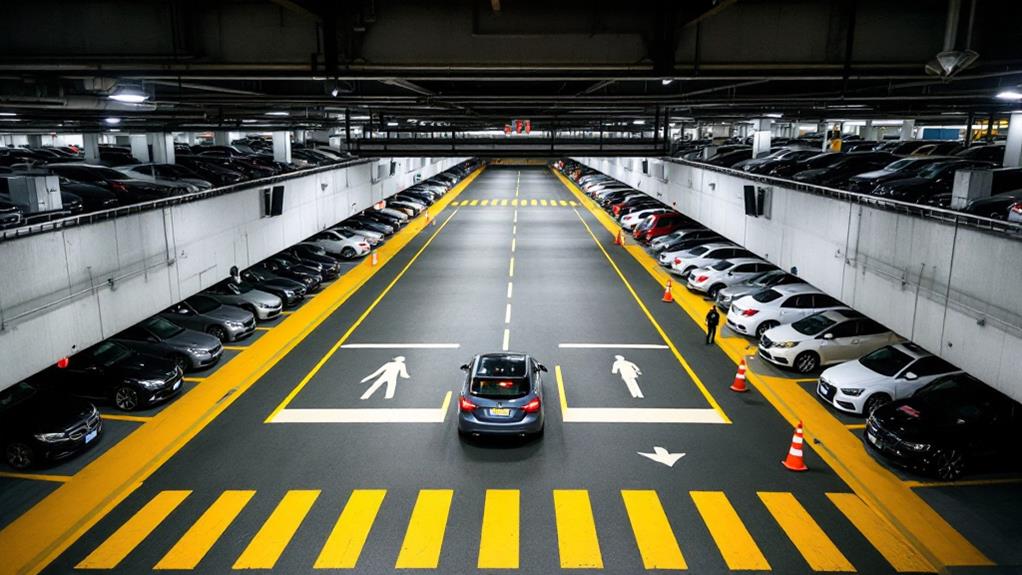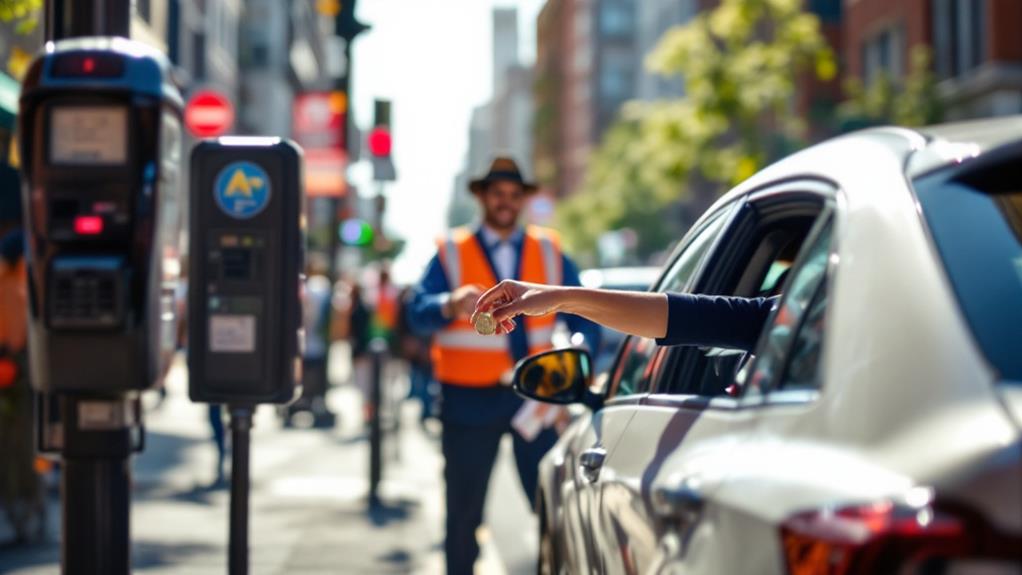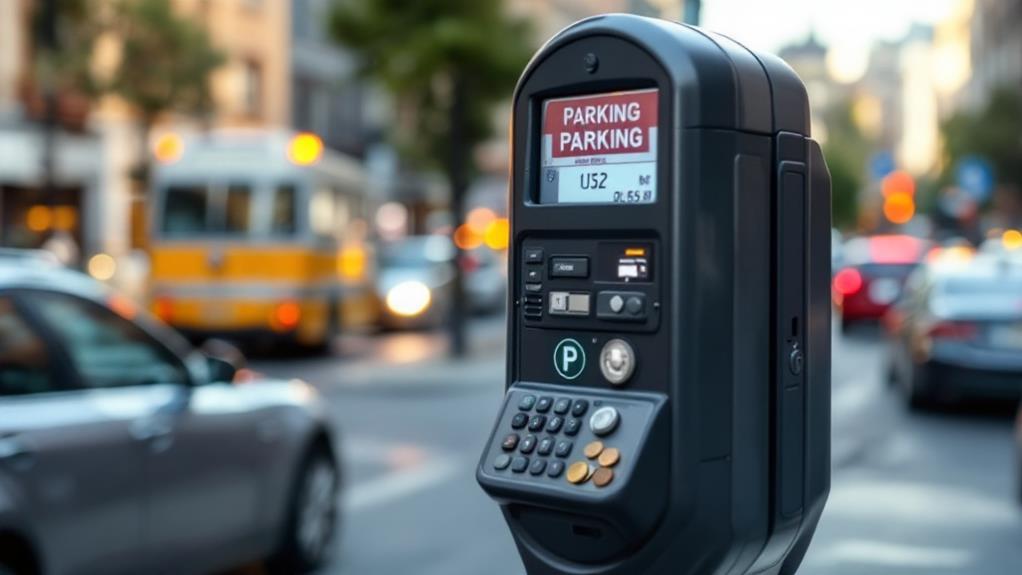10 Mistakes to Avoid When Parking in the City
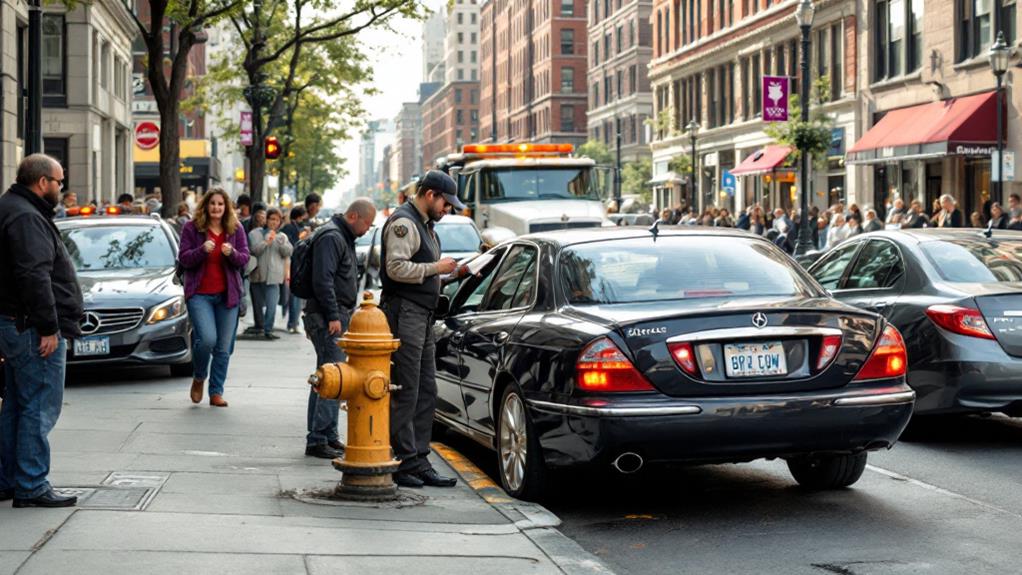
When parking in the city, avoid these common mistakes: ignoring parking signs, misusing disabled spaces, improper parallel parking, overstaying meter time, and disregarding fire hydrant proximity. Don't forget to secure your vehicle, pay attention to street cleaning schedules, and steer clear of parking too close to intersections. Be mindful of private property boundaries and always block driveways or sidewalks. By steering clear of these errors, you'll save time, money, and frustration while managing urban parking challenges. Remember, a little knowledge goes a long way in becoming proficient in the art of city parking.
Ignoring Parking Signs
When it comes to city parking, ignoring signs is a surefire way to land yourself in hot water. Parking signs are strategically placed to clearly outline the rules and restrictions for each parking spot. By disregarding these indispensable pieces of information, you're setting yourself up for costly citations and potential vehicle impoundment.
Parking signs provide essential details about time limits, meter requirements, and special event restrictions. If you're in a zone with time limits, don't forget to feed the parking meter or renew through the app. Failing to do so can result in an expensive ticket. Even more serious consequences await if you park in designated no-parking or tow-away zones. Your vehicle could be impounded at your expense, leaving you with a hefty bill and inconvenience.
During special events, parking restrictions may change. Ignoring these temporary rules can lead to your car being ticketed or towed, disrupting your plans and potentially ruining your day. To avoid penalties and guarantee your vehicle is legally parked, always take the time to read and follow parking signage. It's a simple step that can save you from unnecessary stress and financial burden.
Misusing Disabled Parking Spaces
Inconsiderate drivers who misuse disabled parking spaces create serious problems for those who genuinely need them. When you park in a disabled spot without proper credentials, you're depriving individuals with disabilities of their rightful access to these designated areas. These spaces are specifically designed to provide proximity and accessibility for those with special needs.
As a responsible citizen, it's vital to park only where permitted in parking lots and avoid occupying disabled zones. If you're unsure about parallel parking techniques, consult resources like driving-tests.org for visual examples. This will help you park efficiently without encroaching on disabled spaces or parking too close to them.
Improper Parallel Parking
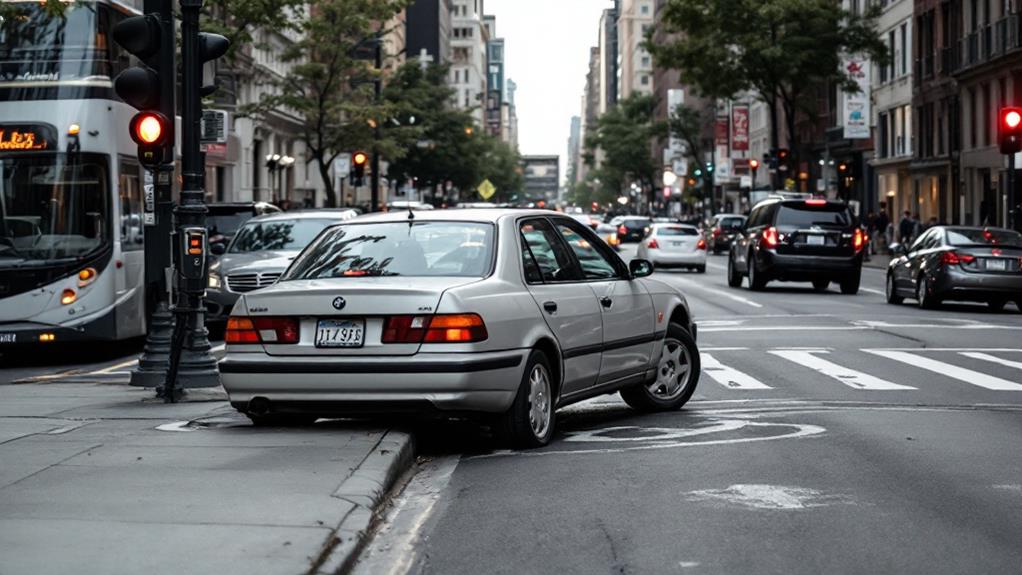
Novice drivers often struggle with parallel parking, leading to a host of problems in busy urban areas. When attempting to parallel park, you might find yourself blocking traffic, causing frustration for other drivers. It's essential to approach the parking spot correctly, aligning your car's rear wheels with the front vehicle's rear bumper before beginning the maneuver.
Many drivers make the mistake of turning the steering wheel too early or too late, resulting in a poor angle and multiple attempts to fit into the space. This not only wastes time but also increases the risk of damaging nearby vehicles. Another common error is leaving too much space between your car and the curb, which can obstruct traffic and potentially lead to a ticket.
To improve your parallel parking skills, practice in a less congested area before attempting street parking in busy city centers. Pay attention to your surroundings, use your mirrors effectively, and take your time. Remember, it's better to park correctly on the first try than to rush and make mistakes. By perfecting proper parallel parking techniques, you'll contribute to smoother traffic flow and reduce stress for yourself and others.
Overstaying Meter Time
A common and costly mistake many drivers make is overstaying their allotted meter time. When you're in a busy city, it's easy to lose track of time and return to your parking space only to find a dreaded citation on your windshield. These fines can range from $25 to $100 or more, quickly turning your quick errand into an expensive outing.
To avoid this costly error, take advantage of modern technology. Many cities now offer mobile apps and remote payment options that allow you to add time to your parking meter from anywhere. These tools often provide expiration alerts, helping you stay on top of your remaining time.
It's paramount to carefully monitor your parking duration and move your vehicle before the meter runs out. Repeatedly ignoring time limits can lead to increased fines or even having your car towed. Before visiting a new city, familiarize yourself with local parking regulations and payment methods. This knowledge will help you navigate the urban setting more efficiently and avoid the hassle and expense of parking citations. Remember, a little preparation can save you both time and money when parking in the city.
Disregarding Fire Hydrant Proximity

While many drivers are aware of common parking rules, disregarding fire hydrant proximity remains a frequent and dangerous mistake. You might be tempted to squeeze into that seemingly perfect parking spot near a fire hydrant, but doing so can lead to serious consequences.
In most cities, it's illegal to park within 15 feet (about 5 meters) of a fire hydrant. This rule isn't just a bureaucratic nuisance; it's essential for emergency vehicle access. By parking too close, you're not only risking a hefty fine but also potentially obstructing firefighters during critical situations.
The penalties for this oversight can be severe. Fines range from $50 to $500 or more, depending on your location. Some cities even tow vehicles parked too close to hydrants, adding towing and storage fees to your already expensive mistake.
To avoid these issues, always be vigilant about fire hydrant locations when searching for a safe spot to park. Take an extra moment to confirm you're not within the prohibited zone. By doing so, you'll protect yourself from fines, prevent potential safety hazards, and contribute to your community's emergency preparedness.
Blocking Driveways and Sidewalks
Drivers often underestimate the impact of blocking driveways and sidewalks when parking in the city. When you're searching for a parking spot, it's tempting to squeeze into any available space, even if it means encroaching on a driveway or sidewalk. However, this seemingly minor oversight can create significant safety hazards and inconveniences for others.
Parking your vehicle in a driveway and blocking the sidewalk forces pedestrians to detour onto the street, putting them at risk. This is especially dangerous for people with mobility issues, parents with strollers, or children walking to school. Additionally, you might think you're leaving enough room for others to pass, but even partially obstructing a sidewalk can impede foot traffic and violate local parking regulations.
When parallel parking, guarantee you're not too close to another vehicle or obstructing a crosswalk. Remember to leave at least 20 feet between your car and any nearby crosswalks at intersections. This distance helps maintain pedestrian visibility and flow. Similarly, avoid parking within 10 feet of stop signs, as this can obstruct drivers' views and create potential hazards. By being mindful of these guidelines, you'll contribute to a safer and more accessible urban environment for everyone.
Failing to Secure Your Vehicle

Beyond obstructing driveways and sidewalks, another common mistake when parking in the city is failing to secure your vehicle properly. Surprisingly, nearly half of all vehicle thefts occur due to cars being left running unattended or keys being left inside. To protect your car and personal information, you should always take precautions when parking.
Three essential steps to secure your vehicle:
- Never leave your car running unattended
- Always remove keys or fobs from the vehicle
- Use the door handle or switch instead of the fob to lock up
When parking, always engage the parking brake and double-check that all doors are locked. Remove any personal information, including documents with your license plate number, to prevent identity theft if your car is stolen. While wheel locks and catalytic converter shields can help deter thieves, they're not foolproof. Remember, keyless entry systems can be vulnerable to hacking, so it's best to manually lock your car. By taking these simple precautions, you'll greatly reduce the risk of theft and protect your irreplaceable asset in the urban jungle.
Neglecting Street Cleaning Schedules
A common yet costly mistake when parking in the city is neglecting street cleaning schedules. Many urban areas have strict regulations requiring vehicles to be moved on specific days to allow for street cleaning. If you're not vigilant about these schedules, you may find yourself facing hefty fines or, worse, a towed vehicle.
For new drivers especially, it's imperative to familiarize yourself with local street cleaning routines. Don't assume that your parking spot is safe just because you've been there for a while. Cities often post signs indicating cleaning days and times, but it's your responsibility to stay informed. Set prompts on your phone or calendar to move your car on the designated days.
Parking Too Close to Intersections
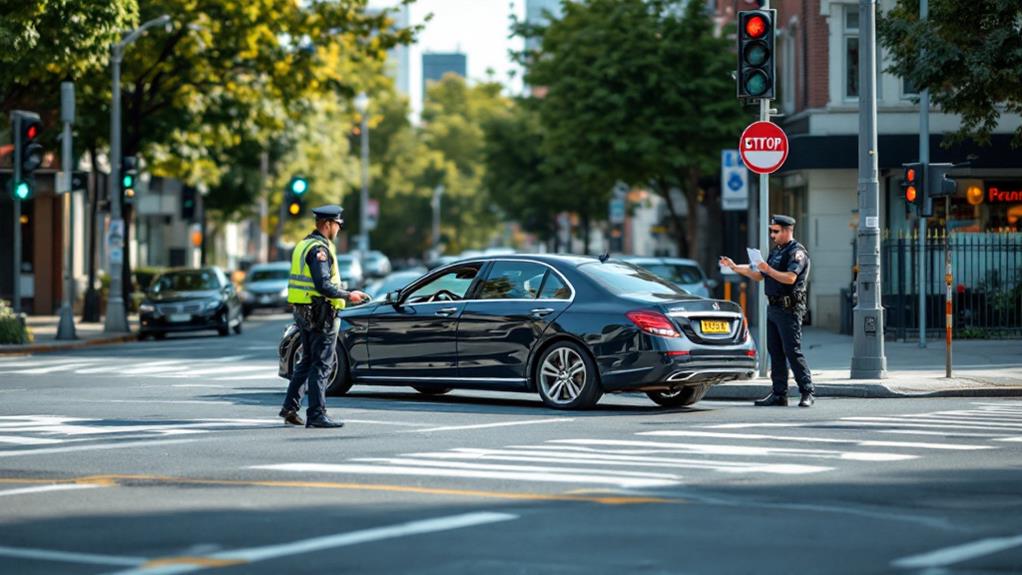
Intersections demand respect when it comes to parking. When you're searching for a parking spot in a bustling city like New York City, it is paramount to avoid parking too close to intersections. This common mistake can create serious safety hazards and result in hefty fines.
Many jurisdictions consider vehicles parked within 20 feet of a crosswalk at an intersection to be illegally parked. Additionally, parking within 10 feet of a stop sign can obstruct other drivers' view, making it difficult for them to navigate the intersection safely. To maintain visibility and guarantee the unobstructed flow of traffic, it is vital to leave sufficient clearance around intersections.
- You'll obstruct the visibility of other vehicles, increasing the risk of accidents
- Emergency vehicles may struggle to access the area quickly
- You'll impede the smooth flow of traffic, causing congestion
Overlooking Private Property Boundaries
While respecting intersections is important, another common parking mistake in cities is overlooking private property boundaries. You might be tempted to park in a seemingly empty lot, especially when street parking is scarce. However, this can lead to serious consequences.
Many private parking lots have clear signage indicating they're for customers only or require permits. Ignoring these signs can result in fines, towing, or even legal trouble. Some property owners use license plate readers or security patrols to enforce restrictions, making it likely you'll be caught.
Parking on private property without permission can damage community relationships between residents and businesses. It's crucial to respect these boundaries to maintain harmony in your neighborhood. Additionally, if an incident occurs while you're illegally parked, your insurance may not cover it.
Be particularly cautious around used car lots or other businesses with large parking areas. These might seem like convenient spots, but they're still private property. Always look for public parking options or obtain proper permission before leaving your vehicle on private land. By respecting private property boundaries, you'll avoid costly mistakes and contribute to a more considerate urban environment.
